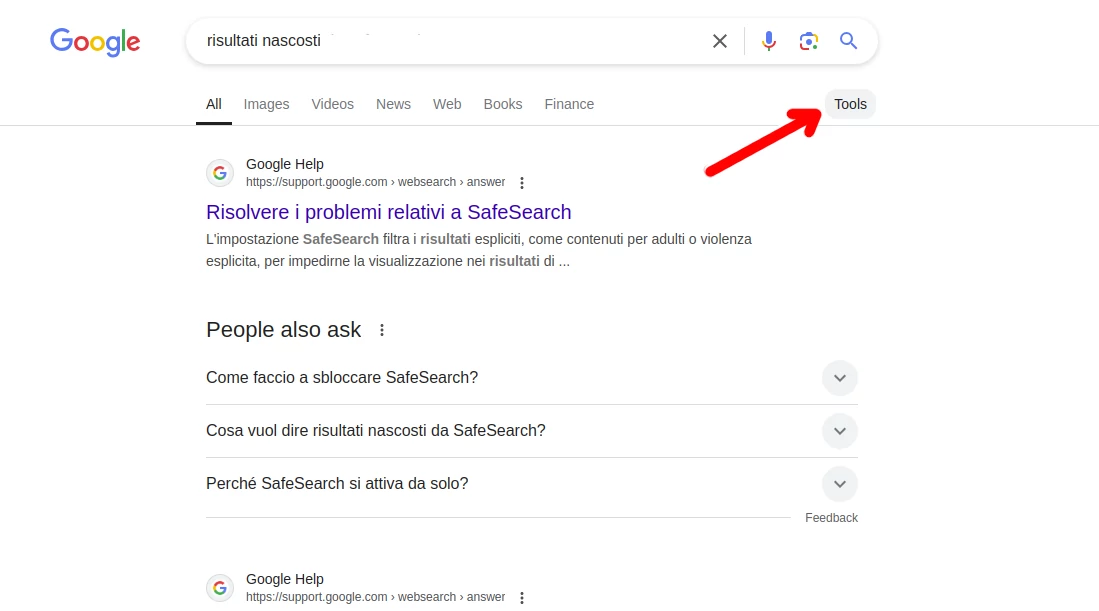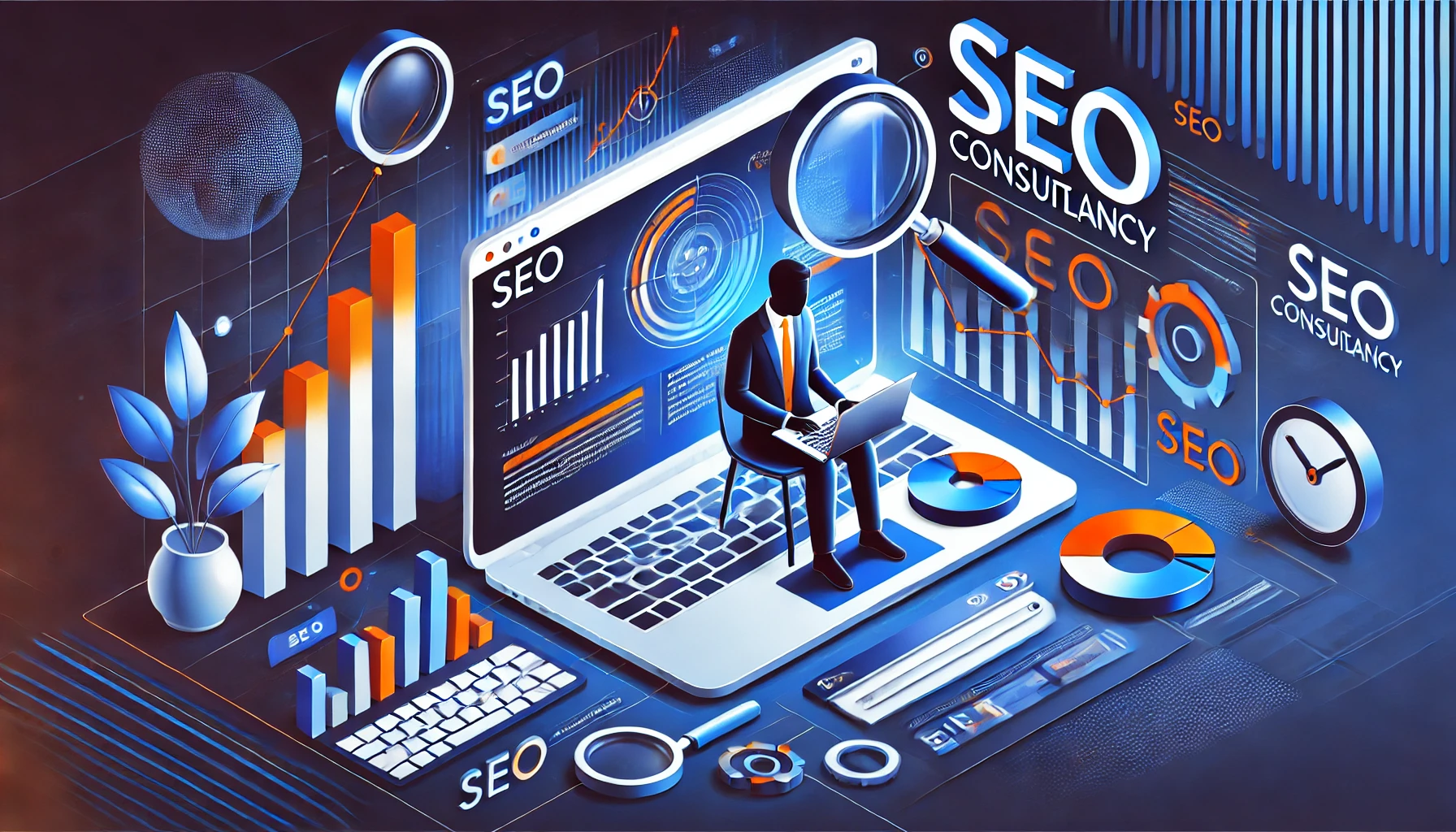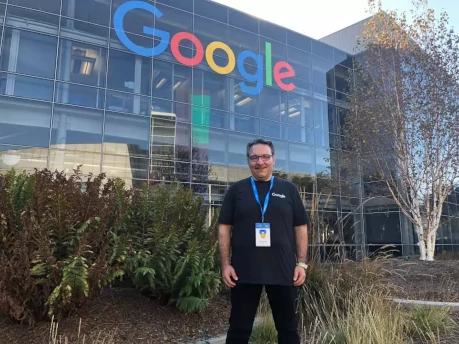Table of Contents
- What are the elements of design
- Balancing
- Hierarchy
- Contrast
- Repetition
- Width
- Proximity
- Harmony
- Movement
- Q&A: Design Principles in Web Design
What are the elements of design
The fundamental elements of design (I call them “design principles”) are the cornerstone of every successful web design project. These principles, derived from traditional graphic design, are adapted to meet the needs of the digital world, offering a balance between aesthetics, functionality and user experience.
A website is not just a set of graphic elements, but a visual communication platform that must be intuitive, attractive and consistent.
The purpose of this article is to offer the future web developer who will deal with graphic design, the individual basic elements, the fundamental principles of design, so that he can apply them correctly in the creation of web products.
Applying the principles of design to web design is essential to create web pages that are not only aesthetically attractive, but also functional and intuitive.
Every designer can choose how to use these tools to improve visual communication, but must always do so keeping in mind the needs of the users and the objectives of the project.
Balancing
Visual balance refers to the even distribution of elements within a composition. Good balance ensures that visual weight is evenly distributed, creating a sense of stability.
Balance in design is essential to creating harmonious and balanced visual compositions. It involves distributing the visual weight of elements equally within a layout to ensure stability and coherence. There are two main types of balance:
- Symmetrical balance: occurs when elements on either side of a central axis are equal in weight, shape, and size. This creates a sense of stable, formal balance. A common example of this type of balance is a composition with axial symmetry, such as a page divided in half with identical elements on either side.
- Asymmetrical balance: in this case, the visual weight of the elements may be different, but the distribution is such that it creates a visual balance. Elements of different sizes or shapes can be positioned so as to balance the composition. This type of balance is often more dynamic and creative, offering flexibility and visual interest.
An effective balance can be achieved using several elements:
- Size: different sized elements can have different visual impacts. Larger elements can more easily balance out smaller elements.
- Color: darker or brighter colors can affect the visual weight of elements. A dark element can be balanced by multiple light elements, or vice versa.
- Position: the position of elements within the layout can affect the balance. For example, multiple elements toward the center of a layout might be balanced by elements toward the edges.
- Shape: geometric and organic shapes can affect the balance. An area filled with complex elements might be balanced by an area with simpler shapes.
Understanding and applying the principles of balance is essential to creating visually pleasing and functional layouts, ensuring that the user’s eye is guided in a balanced way through the composition.
Hierarchy
Hierarchy is the visual organization of elements based on their importance. Using size, color, and placement, you can create focal points and guide the user’s eye through content in a logical manner.
Hierarchy in design is the way visual elements are organized based on their importance to guide the viewer’s eye through a layout or composition. This principle is essential for communicating and prioritizing information clearly and effectively.
Here’s how it works:
- Focal points: hierarchy designates a primary focal point or multiple secondary focal points within the composition. These points attract attention and guide the viewer through the desired sequence of information.
- Size and position: larger or more prominently placed elements usually catch the eye first. This can be achieved through larger sizes, central positions, or at the beginning of a sequence.
- Contrast: using contrast, whether through colors, shapes, or bold text, helps distinguish important elements from less important ones. Visual contrast emphasizes importance.
- Logical organization: a clear hierarchy relies on a logical structure. For example, when dealing with text, the use of headings, subheadings, and paragraphs contribute to a comprehensible hierarchy.
- Consistency: maintaining consistency in the design helps establish a hierarchy. If certain elements are used consistently to indicate importance (for example, a particular color for headings), this helps communicate the hierarchy.
- Direction and flow: the use of directional lines, shapes, or elements can guide the eye through a sequence of elements, thus emphasizing hierarchy.
Creating an effective hierarchy is essential to guide attention and communicate the most important information to the user clearly and immediately. A well-structured hierarchy makes it easier to understand and navigate a design, improving the overall user experience.
Contrast
Contrast is the difference between elements, such as color, size, and shape. Good contrast makes elements stand out from each other, improving readability and visual interest.
Contrast in design is a visual principle that refers to the marked difference between elements within a composition. This difference can be evident through various attributes, including color, shape, size, and texture. Here’s how contrast can be used to emphasize elements and enhance your design:
- Color contrast: using different colors or the difference between light and dark helps create strong contrast. For example, dark text on a light background provides good readability thanks to the contrast.
- Shape contrast: elements with different shapes can create visual contrast. For example, a circular shape next to a rectangular shape creates a strong visual contrast.
- Size contrast: elements of different sizes within a composition can create a strong visual impact. A larger object next to a smaller one draws attention.
- Texture contrast: using different textures or patterns can create interesting visual contrast. For example, the difference between a smooth surface and a rough surface.
- Brightness contrast: the difference in brightness or gloss between elements creates strong visual contrast. This can also be achieved through differences in opacity.
Contrast is essential because it emphasizes important elements and helps create visual interest within a design. It also contributes to readability and accessibility, making content clearer and easier to understand. However, it is important to use contrast in a balanced way; too much can make the design too confusing or difficult to interpret.
Repetition
Repetition of visual elements creates coherence and cohesion within a design. The consistent use of colors, shapes, or styles helps create a sense of continuity and visual identity.
Repetition in design is a visual principle that involves the consistent use of similar or identical visual elements within a composition. This principle contributes to the coherence, readability, and organization of the design. Here are some ways repetition can be used effectively:
- Visual consistency: repeating elements such as colors, shapes, text styles, or patterns throughout a design creates a consistent, uniform look. This consistency makes it easier for users to recognize and interpret content.
- Organization: repetition can be used to organize and structure content in a logical way. For example, repeating similar layouts for different sections of a website provides intuitive organization.
- Visual guidance: repeating visual elements can guide the viewer’s eye through a sequence or page, providing a clear visual flow.
- Unification: using repetition, you can unify different elements within your design, creating a sense of cohesion and belonging to the same visual context.
- Recognizability and branding: in branding, repeating distinctive visual elements (such as a logo or a specific color) helps strengthen brand recognition.
La ripetizione, quando utilizzata in modo accurato, fornisce una base solida per il design, facilitando la comprensione e la navigazione all’interno di una composizione. Tuttavia, è importante bilanciare la ripetizione con la varietà per evitare la monotonia e mantenere l’interesse visivo degli utenti.
Width
Width refers to the space between elements. Effective space management helps guide the user’s eye, improve readability, and give a composition breathing room.
Width in design refers to the space between elements within a visual composition. It is crucial because it affects organization, balance, and the overall visual experience. Here’s how width can be used effectively:
- Readability and clarity: spacing between text, content blocks, and visual elements promotes readability. Adequate space between words and paragraphs improves clarity and comprehension.
- Balance and breathing: spacing helps create a sense of visual balance within a design. Careful use of negative space can provide a visual pause, allowing elements to breathe and be appreciated individually.
- Organization and structure: space between visual elements helps organize a layout. Good use of spacing helps define the relationship between elements and create a clear visual structure.
- Orientation and flow: space can guide the viewer’s eye through a composition. Direction and spacing can create a visual flow, indicating the sequence of content or hierarchy of elements.
- Visual impact: strategic use of spacing can emphasize certain elements or areas of a design, making what is most relevant or important stand out.
It is important to find a balance in the use of width: too much space can cause dispersion or distraction, while too little can make the design crowded and difficult to interpret. Careful management of width contributes to a clear and organized visual presentation, improving the overall user experience.
Proximity
Visually related elements should be placed close together to communicate relationships and connections. This principle helps organize content clearly and intuitively.
Proximity in design is the principle that refers to the arrangement of visual elements in relation to one another. The organization of elements that are close together or related can greatly influence the appearance and understanding of the design. Here are some ways in which proximity can be used effectively:
- Logical organization: grouping similar or related elements in close proximity to each other helps create a clear and logical visual structure within the design.
- Communicating relationships: proximity can communicate relationships or connections. Elements placed close to each other suggest a visual or conceptual connection.
- Simplification and clarity: organizing elements that are close together and related helps make the design easier to understand. This organization promotes clarity and ease of use.
- Hierarchy and priority: placing more important or primary elements close to each other communicates their importance within the layout.
- Readability: proximity affects readability. A text and its related headings, subheadings, or paragraphs, when placed close together, make it easier to read.
Using proximity effectively contributes to an organized and comprehensible visual presentation. It is a crucial element in guiding the viewer’s eye through the design, communicating relationships and logically structuring content.
Harmony
Harmony refers to the overall balance and coherence of a design. Creating visual harmony involves the careful use of colors, shapes, and placement for a cohesive and pleasing appearance.
Harmony in design is the result of a combination of visual elements that work together in a balanced way, creating a sense of unity, cohesion, and visual pleasure. Here’s how harmony can be achieved:
- Visual consistency: using similar or related elements within a design. This can include colors, shapes, text styles, or patterns that work together harmoniously.
- Balance: a good balance between visual elements, such as size, color, and space, contributes to harmony. An even distribution of visual weight throughout the design creates a sense of stability.
- Continuity and repetition: using consistent repeating elements or visual patterns throughout the design. Continuity and repetition contribute to harmony by creating cohesion and flow.
- Simplification: a design that is too complex can disrupt harmony. Simplifying details and focusing on essential elements can help create a more harmonious vision.
- Balanced contrast: a well-balanced contrast between elements can add visual interest without compromising harmony. Too much contrast can disrupt the overall balance.
The goal is to create a pleasant and cohesive visual experience, where elements integrate without conflict and create a sense of unity. Harmony in design promotes readability, balance and understanding, contributing to a satisfying visual experience for the user.
Movement
While typically associated with interactive design, motion can be used to direct attention and add dynamism to a visual experience.
In design, motion refers to the feeling or illusion of action or dynamism within a static image or layout. While graphic design and web design are primarily static, they can create the illusion of motion through a variety of methods:
- Direction and lines: using directional lines and shapes can create a sense of motion. Slanted or curved lines suggest direction and dynamism.
- Perspective: using perspective can create a sense of depth and motion within an image. The illusion of objects moving away or toward each other adds dynamism.
- Animations and transitions (in Web Design): in web design, animations and transitions can convey the idea of motion. Elements that move, change shape, or transform create a sense of dynamism.
- Patterns or repeating elements: using patterns or elements that repeat in a certain way can create the illusion of movement. A rhythmic organization can suggest action or motion.
- Color and brightness: using color can create a sense of movement. For example, gradual transitions from one color to another can give the illusion of change and movement.
While motion is often an illusion in visual design, it can impact the user experience by creating a sense of dynamism and engagement. It is important to balance motion to ensure that it does not distract the user or compromise the usability of the design.
Q&A: Design Principles in Web Design
- What are design principles in web design? Design principles in web design are rules that guide the creation of functional, aesthetic, and intuitive web pages.
- Why is balance important in design? Balance provides visual stability by distributing the weight of elements equally in a layout.
- How is contrast used in web design? Contrast emphasizes key elements, improving readability and visual interest.
- What role does white space play in a website? White space improves readability, highlights important elements, and makes the design cleaner.
- What is hierarchy in graphic design? Hierarchy organizes elements based on their importance, guiding the user’s attention.
- What is the importance of repetition in web design? Repetition creates consistency and strengthens the visual identity of a website.
- How do you achieve visual harmony in a design? Harmony is achieved by balancing colors, shapes, and spaces to create a cohesive composition.
- What role does proximity play in design? Proximity organizes related elements close together to improve clarity and accessibility.
- How does motion influence web design? Motion creates dynamism and guides the user through transitions and animations.
- What principles are essential for a good user experience? Balance, hierarchy, contrast, white space, and harmony are key to a great user experience.












